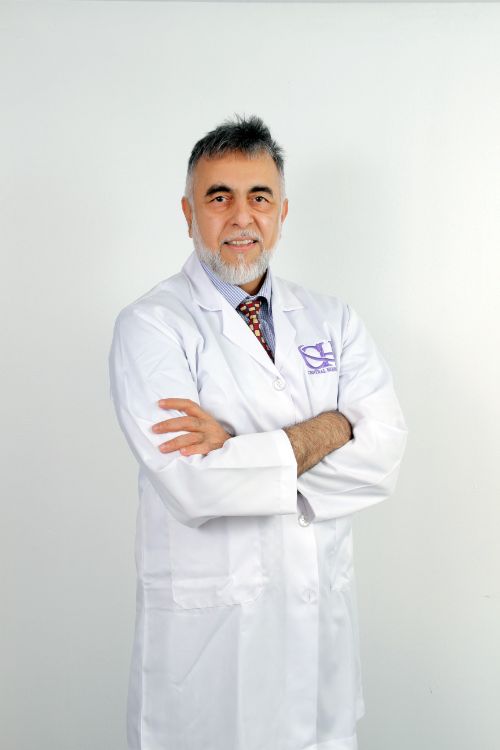General Surgery in Sharjah
Working Time
Monday – Sunday
09:00 – 22:00
Emergency Case
On Call

Expert General Surgery in Sharjah: Comprehensive Surgical Care
Looking for expert general surgery in Sharjah? Discover advanced care with skilled surgeons ensuring safety, precision, and faster recovery.
At Central Hospital Sharjah, we provide high-quality General Surgery in Sharjah, focusing on patient safety, comfort, and effective treatment. Whether you require routine procedures or complex surgeries, our experienced team of surgeons is committed to delivering exceptional care using advanced techniques and equipment.
Specialized General and Laparoscopic Surgery
Our General Surgery in Sharjah department offers both traditional and laparoscopic surgery options. With the use of minimally invasive techniques, we provide patients with faster recovery times, less pain, and reduced risk of complications. From simple procedures to complex surgeries, our surgeons are equipped to handle a variety of conditions with precision and care.
Laparoscopic surgery, often referred to as minimally invasive surgery, is one of the most advanced approaches in modern healthcare. By using smaller incisions, laparoscopic procedures reduce recovery times and improve overall patient outcomes. This technique is especially beneficial for surgeries involving the abdomen, such as gallbladder removal or hernia repair.
Conditions Treated with Laparoscopic Surgery
In our General Surgery in Sharjah department, we treat a wide range of conditions using minimally invasive techniques. Some of the most common issues include:
- Acute Appendicitis
- Gallstones
- Hernias
- Colon Tumors
- Obesity
- Gastroesophageal Reflux Disease (GERD)
Laparoscopic surgery provides many benefits, including less post-operative pain and faster recovery, allowing patients to return to their daily activities with minimal disruption.
The Advantages of Minimally Invasive Surgery
Laparoscopic surgery offers numerous advantages over traditional open surgery. These benefits include:
- Smaller Incisions: Reducing the size of the incision minimizes tissue damage and scarring.
- Faster Recovery: Smaller incisions lead to quicker healing times and less discomfort.
- Reduced Risk of Infection: With less tissue disruption, there is a lower risk of infection post-surgery.
- Less Pain: Many patients experience significantly less pain during recovery compared to open surgery.
These benefits make minimally invasive surgery a preferred choice for many patients requiring abdominal or pelvic procedures.
Comprehensive Surgical Services at Central Hospital Sharjah
Our General Surgery in Sharjah department offers a wide range of services, including:
- Gastrointestinal Surgery: Treatments for conditions like peptic ulcers, colorectal cancer, and gallbladder disease.
- Colorectal Surgery: Procedures such as colon resection, rectal surgery, and rectal prolapse correction.
- Breast Surgery: We offer surgeries for both benign and malignant breast conditions, including mastectomy and breast reconstruction.
- Hernia Surgery: Specialized techniques for inguinal hernia, femoral hernia, and other types of abdominal hernias.
- Obesity Surgery: Bariatric procedures that help patients achieve significant weight loss and improve overall health.
Thyroid Surgery: Surgical interventions for thyroid-related conditions.
Why Choose Central Hospital Sharjah for General Surgery?
At Central Hospital Sharjah, we are dedicated to providing the highest standard of care. Here’s why patients choose us for their General Surgery in Sharjah:
- Experienced Surgeons: Our British-trained surgeons bring expertise in both traditional and minimally invasive techniques, ensuring the best outcomes for all types of surgeries.
- Advanced Technology: We use the latest surgical equipment, including laparoscopic tools, to perform procedures with precision and care.
- Comprehensive Care: From initial consultation to post-operative recovery, we offer a personalized approach to ensure your comfort and well-being.
- Affordable and Transparent Pricing: We provide clear pricing with no hidden costs, ensuring that high-quality surgical care is accessible to all.
Schedule Your Consultation Today
If you’re considering General Surgery in Sharjah, Central Hospital Sharjah is here to offer expert surgical care. Our experienced team is ready to discuss your needs and create a treatment plan tailored to your individual requirements. Contact us today to schedule a consultation and take the first step towards improved health.

